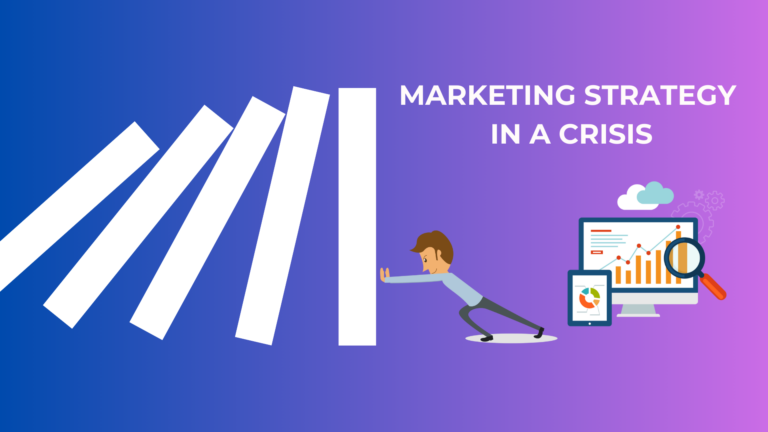Date of publication:
25 Apr. 24How to Conduct Competitive Analysis in Marketing
Developing a company’s strategy will not be successful and effective if you do not understand and clearly assess the competitive environment, namely those brands that are developing identical directions. This will help understand how the competitors’ ideas intersect with a particular brand, what are the strengths and weaknesses of each company.
Without knowing all the nuances of how competitors conduct marketing, it is difficult to assume which of them can pose a real threat and gain a leading position in a particular niche. A competitive analysis is an ideal basis for creating a company development plan. A thorough study of external factors by marketers will help take into account the specifics of the product and form a business promotion strategy that will enable the company to leave competitors behind.
The Essence of Competitive Analysis
To better understand who is working in the same commercial niche as the company, competent marketers conduct a competitor analysis. This concept includes a variety of methods for determining the principles of operation of competing organizations that provide the purchasing audience in the market with similar goods or services. By analyzing the competitive environment, specialists will be able to identify the advantages and weaknesses of competitors, study the range of their products, as well as pricing policies, and delve into the principles of their strategies. Understanding all these features will allow, based on the information collected, to formulate a unique trade offer. Positive and beneficial differences from other brands or companies will attract more customers.
Competitive Analysis: Why Conduct It
The importance of competitive analysis is determined by many reasons. First of all, it allows you to form an opinion about the situation in the market, as well as determine the place of the organization in relation to other enterprises in this commercial segment. Competitor analysis will allow you to:
- Formulate a pricing strategy;
- Identify the strengths and weaknesses of the company;
- Identify growth points and threats;
- Establish positioning, formulate a USP;
- Assess the level of market competition.
Having up-to-date information about the situation in the market and the activities of competing brands is possible if such an analysis is carried out regularly, for example, once every 6 months. However, the frequency is set depending on the speed of changes in the industry, as well as the level of competition. Competitive analysis is indispensable before any marketing events, for example, before launching an advertising campaign, rebranding, changing product positioning or drawing up a sales plan. It will not hurt in the case of entering a new product into the market, developing a marketing strategy, developing an application or website.
Competitor Analysis: Preparation Stages
When starting an analysis, it is necessary to formulate its purpose and the results that are expected to be obtained as a result. This will make it possible to understand what information to look for and what tools to choose for the work. Then it is necessary to make a list of potential competitors, using social networks, search engines, maps and directories, survey data and ratings. At the same time, it is worth keeping in mind that competitors are conditionally divided into:
- Direct – offering a similar product and targeting the same consumer segment;
- Indirect (secondary) – focused on the same consumer segment, but producing a different type of product;
- Indirect (substitutes) – meeting the same need, but using a different type of product.
Important sources of information about them: reviews on specialized sites, user comments. You can conduct “field research” with a visit of a “secret shopper”, conduct interviews with clients, observe the behavior of consumers in the process of choosing goods.
What Else Needs to Be Done
An important preparatory stage is the selection of criteria and evaluation methods. The evaluation criteria are influenced by the object and objectives of the study. In the case when the object of evaluation is a product, it is necessary to analyze:
- Assortment;
- Prices;
- Promotions;
- Positioning;
- Packaging design and quality;
- Distribution channels;
- Functional characteristics.
If it is decided to analyze the website, the evaluation criteria are the form of the application, ease of use, structure. The evaluation methods should be considered in more detail in order to determine which one will most fully correspond to the goals and expected results of the competitive analysis being carried out.
Evaluation Methods: Comparative Analysis
One of the simplest and most visual methods, at the same time the most popular and simple, is comparative analysis. It helps solve a large number of tasks and achieve many marketing goals. To conduct this analysis, a list of criteria is drawn up, which depend on the research objectives, and competitors are evaluated in accordance with them. This analysis will help determine:
- Target audience;
- Product or entire product range;
- Brand image, positioning;
- Pricing policy;
- Distribution methods, sales channels;
- Advertising strategies and promotion methods;
- Staff qualifications;
- Service level.
This method does not give a complete and comprehensive picture, like, for example, SWOT or Porter’s “five forces” analysis, but it is popular due to its simplicity and ease of application.
Porter’s Five Forces and SWOT
This methodology was developed by Michael Porter of Harvard Business School. Using the analysis of the five forces affecting the business, it helps to evaluate the competitiveness of the product through:
- Actions of competitors;
- Behavior of suppliers;
- Changes in customer behavior and priorities;
- Entry of new companies into the market;
- Emergence of substitute products.
The marketer places the influencing forces in a table, assigns each a rating from 1 to 10, analyzes the results, and draws conclusions. In the course of SWOT analysis, competitors’ products are evaluated and compared with the company’s offering. Based on this data, advantages and disadvantages are identified. The abbreviation stands for:
- Strengths – advantages and reasons influencing product choice.
- Weakness – disadvantages, limitations.
- Opportunities – development opportunities, growth points.
- Threats – threats from the external environment.
Intro-Industry Competition and Competitive Market Map
The first method consists of describing the situation within a specific niche or industry. Data is collected for 2-3 years and the dynamics are evaluated:
- Market growth rates
- Number of competitors
- Sales volumes
- Price levels
- Degree of product differentiation – emergence of new products and number of product groups
The goal of this analysis is to assess the current level of competition, identify trends, and forecast the state of the industry in the future.
Creating a competitive market map is another effective method of competitive analysis. The map clearly reflects the company’s position in the market and visualizes data on any two of the selected criteria: quality and assortment, brand awareness and price level. Usually, a comparative assessment is made of the market share and growth rates to identify potentially dangerous players and leaders.
The Stage of Direct Data Analysis and Conclusions
After all the preparatory stages are completed, the most suitable criteria and evaluation method are selected, you can proceed directly to the evaluation. Sources of information on market share and sales volumes can be open sources on the network or research that is purchased from relevant marketing agencies. Analytical services such as AdMobiSpy, Target Hunter, Spy Words will allow you to track advertising campaigns. The information obtained is analyzed using the selected methods, and data on competitors is compared with information about one’s own business.
At the final stage, the marketer prepares a report or presentation using diagrams and graphs to visualize the results. The final stage is the formulation of conclusions and development of recommendations. Based on analytical data, management makes decisions on changing prices and positioning, launching an advertising campaign, or developing a new product.



